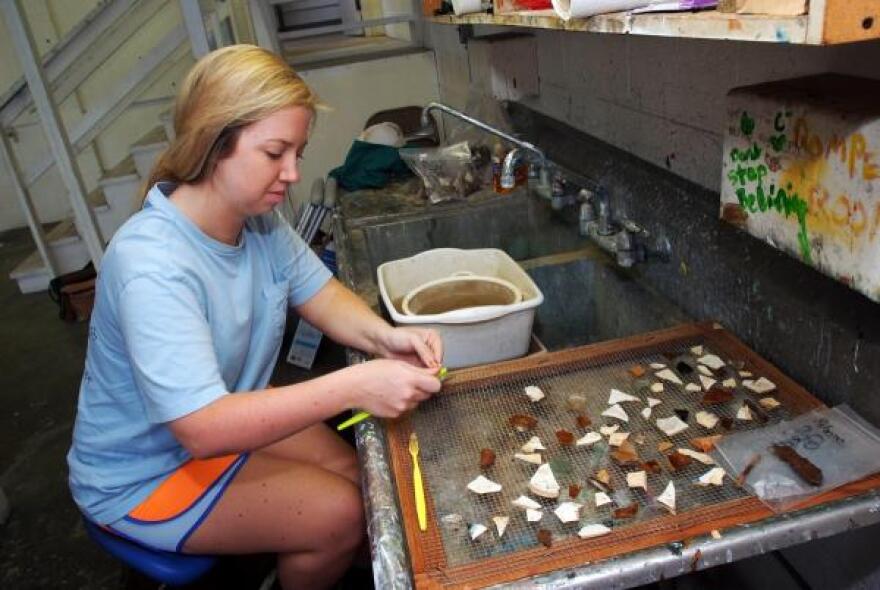There’s been hot debate over the question of whether guns belong on today’s college campus, but scholars at Washington & Lee University have made a surprising discovery. It seems firearms were very common at school in the 1700s and 1800s.
That detail and other aspects of student life have emerged from a university construction site where archaeologists have found thousands of artifacts.
Alison Bell loves to dig in the dirt and to sift through soil, searching for clues to an unwritten past, so when Washington & Lee University asked her to check out a construction site just 40 feet from her office, she was delighted – and thrilled by what she found at Robinson Hall, which once served as a dormitory and provided 15 rooms for classes.
“Literally, you couldn’t put a trowel in the ground without hitting pieces of window glass, ceramics from the early 1800s, nails, toothbrushes made out of bone. It was almost a pavement of artifacts.”
When they heard that, university administrators authorized a dig at the site, and students like Lauren Hatfield joined the underground search.
“I came in the first day of work, and they had this huge grid laid out with all this incredible pottery and jars and everything, and I was really excited!”
And as word of the dig spread, a local high school student – Joshua Ayres – decided to volunteer. He was quickly rewarded with a remarkable find – a button from the Kentucky Military Institute.
“It just looked like a normal button at first, and then I started to uncover it with water, and it was like – aw this is something cool. It had an eagle with a shield and the number one on it, and I was like, ‘Oh, it’s an infantry button.’”
In addition, the team found a penny from 1851, pocket knives and proof of how important firearms were from the time of the school’s founding in 1749 through the Civil War. Again , Professor Alison Bell.
“One of the things that was most surprising to me was the amount of ammunition on the site. There were 22’s and 38’s, there were mini-balls from the Civil War era, and we think those were Union mini-balls related to General Hunter’s invasion and torching of parts of Lexington in 1864.”

There were also remnants of a chemistry lab.
“There are medicine viles, little test tubes and beakers, funnels, and so probably where we’ve been excavating is close to a back door, and it was very common at the time – in the early 19th century – for everyone to simply dispose of unwanted items in the most convenient way – in the back yard.”
Construction crews moved sod and surface soil – piling it outside Professor Bell’s building for further study, then covered the site outside Robinson Hall with gravel, so the building’s renovation could proceed.
“This is a bit of slate – probably part of a writing slate.”
Bell’s team is now keeping busy cleaning and cataloging thousands of artifacts for analysis and display – and come spring, they hope to remove the gravel and start digging again.



